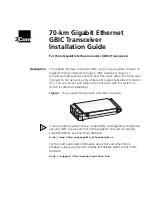
AVR350
E-14
HQ Video
: Choose between
RGB
or
YUV
; if you have a YUV display, set this item to
YUV
, otherwise
set it to
RGB
. Note that this setting has no effect on the HDMI output.
This setting controls the routing of the HQ-video within the AVR350, either as 3-wire YUV or 4-
wire RGB signals (with the synchronisation signal on composite for RGB). In addition, it controls
the operation of the S-video/composite-to-HQ video converter.
When set to YUV, incoming composite and S-video signals are converted to YUV; in RGB mode,
the iincoming signals are converted to RGB, with the synchronisation signal on the composite
output.
2 – Speaker Sizes
The size and number of loudspeakers are defined on this page.
Auto Set-up:
Allows the setting of ‘standard configurations’ as in the table below:
Speaker
Config. 1
Config. 2
Config. 3
Custom
Front L/R
Small
Large
Large
Small/Large
Centre
Small
Small
Small
Small/Large/None
Surr L/R
Small
Small
Large
Small/Large/None
Surr Back L/R
Small
Small
Small
Small/None
Sub-woofer
Present
None
Present
Present/None
5.1 Rears
Both
Both
Both
Surr L/R/
Sur Back L/R/
Both
The
Custom
setting allows you to choose any combination of speakers to suit your system. Note that
the centre and rear speakers cannot be set to ‘large’ if the front speakers are set to ‘small’.
5.1 Rears
defines how the speakers in a full ‘7.1’ installation handle 5.1 decoded sources.
<
SURR L/R
redirects 5.1 surround signal to the surround left and right speakers. No signal will be
directed to the surround back left or right speakers.
<
SURR BACK L/R
redirects 5.1 surround signal to the surround back left and right speakers. No
signal will be directed to the surround left or right speakers.
<
BOTH
redirects the 5.1 surround signal to both pairs of speakers with the signal to each set
reduced by 3dB.
A note on speaker sizes:
A
Large
speaker is one that is capable of handling a full range signal (i.e., 20Hz–20kHz).
A
Small
speaker is one that is not capable of reproducing a deep bass signal (i.e., below 100Hz),
for example a satellite speaker.
None
indicates that there is no speaker connected to that channel.
3 – Subwoofer Settings
If no subwoofer was selected in the previous speaker menus then some of the items on
this page will not be adjustable.
Cross-over Freq.
: This setting defines the frequency at which bass redirection begins.
Frequencies below this level are redirected from ‘small’ speakers to the Fronts or to
the subwoofer; frequencies above this level are not redirected. The value for this
setting depends on your speakers, environment and taste, and is best determined by
experimentation.
The adjustment can be made in increments of 10Hz between 40Hz and 130Hz.
Stereo Mode
: Select between Large, Large+Sub or Sat+Sub.
If you have configured your system to have a subwoofer, then you have the flexibility to
choose how bass information is distributed between the front left/right speakers and the
subwoofer when listening to stereo sources. Choose the option which gives you the most
solid even sounding bass (for best results test with a set-up disc or live program material).
<
LARGE
: Pure stereo information – all audio is sent to the front left and right speakers. Use this
setting if you have large front speakers.
Note that this option will override the setting configured on the ‘Speaker Sizes’ menu page.
<
LARGE+SUB
: Pure stereo is fed to left and right and extracted bass is sent to the subwoofer. In
this case the low frequency information is, effectively, duplicated.
<
SAT+SUB
: Use this setting if you have ‘Small’ satellite left and right speakers. Full bass
management is used in analogue stereo so that analogue sources are fed to the DSP where the
bass is filtered off left and right and redirected to the subwoofer.
Note that the above three Stereo Mode settings pass the audio through the DSP, which may degrade
the sound quality slightly. This can be avoided for the ‘Large’ setting by pressing the
DIRECT
button to
bypass the DSP processing.
DTS LFE Gain
: DTS soundtracks typically have the LFE track recorded 10dB lower than the main audio
tracks. It is, therefore, necessary to compensate for this by raising the LFE output level by 10dB, and
setting the DTS LFE gain to ‘Normal’ activates this compensation. Some DTS soundtracks have been
recorded with the LFE signal at the same levels as the main audio, however, and therefore require no
gain compensation. For these disks set the DTS LFE gain to -10dB.
<
NORMAL
: This increases the LFE signal by 10dB and is the recommended setting for the AVR350.
<
-10DB
: This allows the LFE to pass directly to the output with no gain adjustment.
Unfortunately, there is no rule for determining which discs are recorded using which method. As a
general guide, however, it is only early DTS music discs that require the -10dB setting.















































